Introduction
Net working capital (NWC) serves as a critical indicator of a company's liquidity and operational efficiency, particularly in the context of mergers and acquisitions (M&A). An accurate understanding of NWC can significantly enhance the financial health and attractiveness of a business to potential buyers. This article delves into the pivotal role of NWC in M&A, exploring its importance in financial due diligence, the intricacies of making accurate adjustments, and the impact of these adjustments on tax outcomes.
By examining best practices and legal considerations, the article aims to provide CFOs with actionable insights to navigate the complexities of NWC adjustments effectively, ensuring smooth and successful transactions.
Defining Net Working Capital and Its Importance in M&A
Net working capital (NWC) is the difference between a company’s current assets and current liabilities, and it is pivotal in mergers and acquisitions (M&A) as it showcases the liquidity position of a business. A clear understanding of NWC is essential for evaluating operational efficiency, capital management, and overall economic health. Accurate NWC assessments during M&A transactions ensure that buyers and sellers agree on necessary adjustments to reflect the true value of the business. According to a report published in August 2023, organizations that underwent resolution processes saw significant improvements in their financial health. The average sales of these businesses surged by 76% in the three years post-resolution, and their operational break-even status improved notably. This illustrates how well-managed NWC can significantly improve an organization's performance and make it more appealing for potential acquisitions.
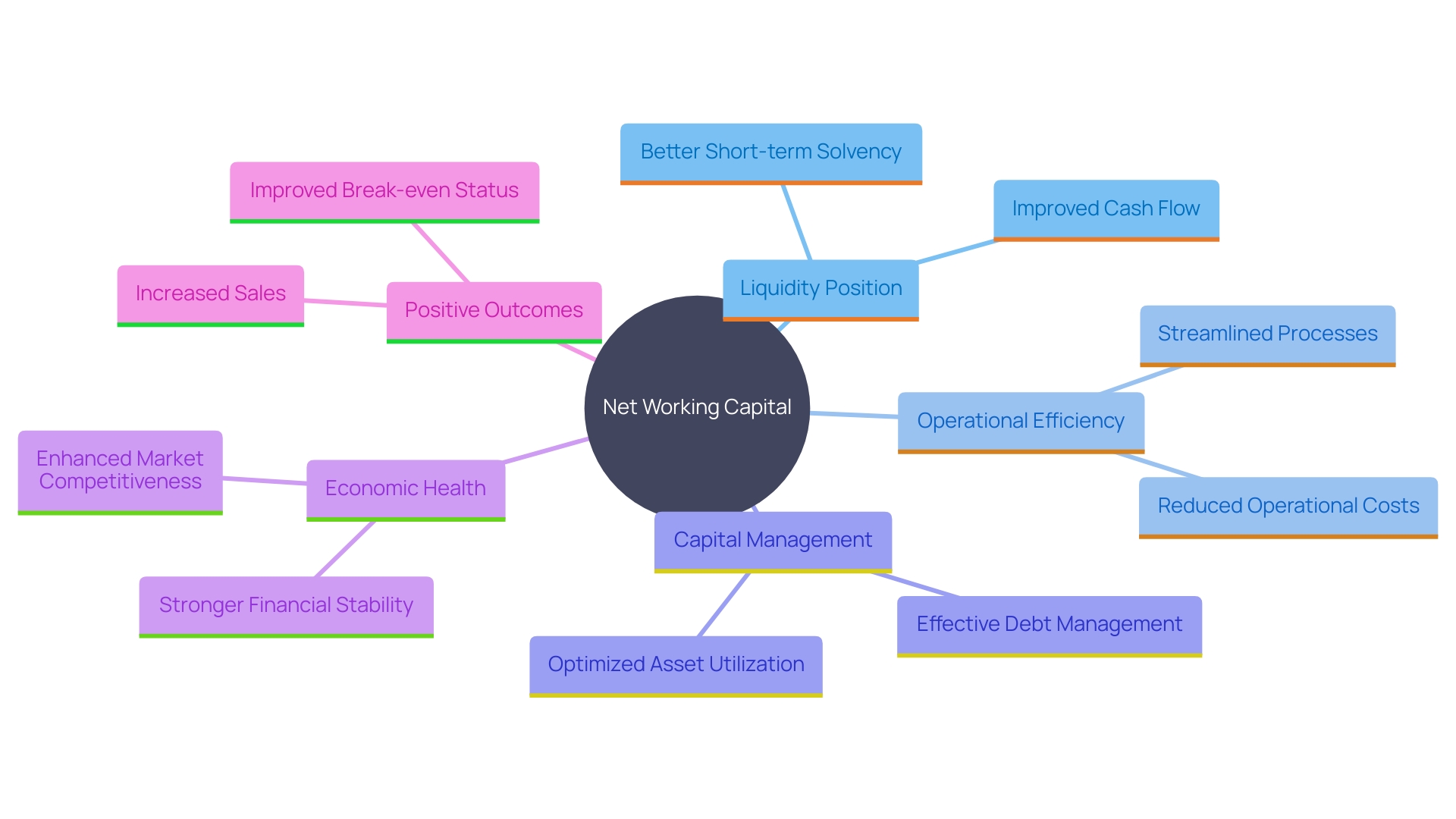
The Role of Net Working Capital Analysis in Financial Due Diligence
During fiscal due diligence, analyzing Net Working Capital (NWC) is crucial for evaluating a target organization’s operational effectiveness. This involves examining accounts receivable, inventory, and accounts payable to evaluate the efficiency of managing short-term assets and liabilities. Identifying trends and anomalies in NWC offers valuable insights into cash flow management and operational efficiency, which are essential for making well-informed investment decisions. As the Office of the Chief Accountant emphasizes, high-quality reporting of funds, including cash flow statements, is essential for investors to comprehend an organization's capacity to generate future cash flows and fulfill monetary responsibilities. Additionally, the adoption of predictive analytics in economic analysis helps decision-makers respond effectively to complex economic conditions, further emphasizing the importance of thorough NWC analysis.
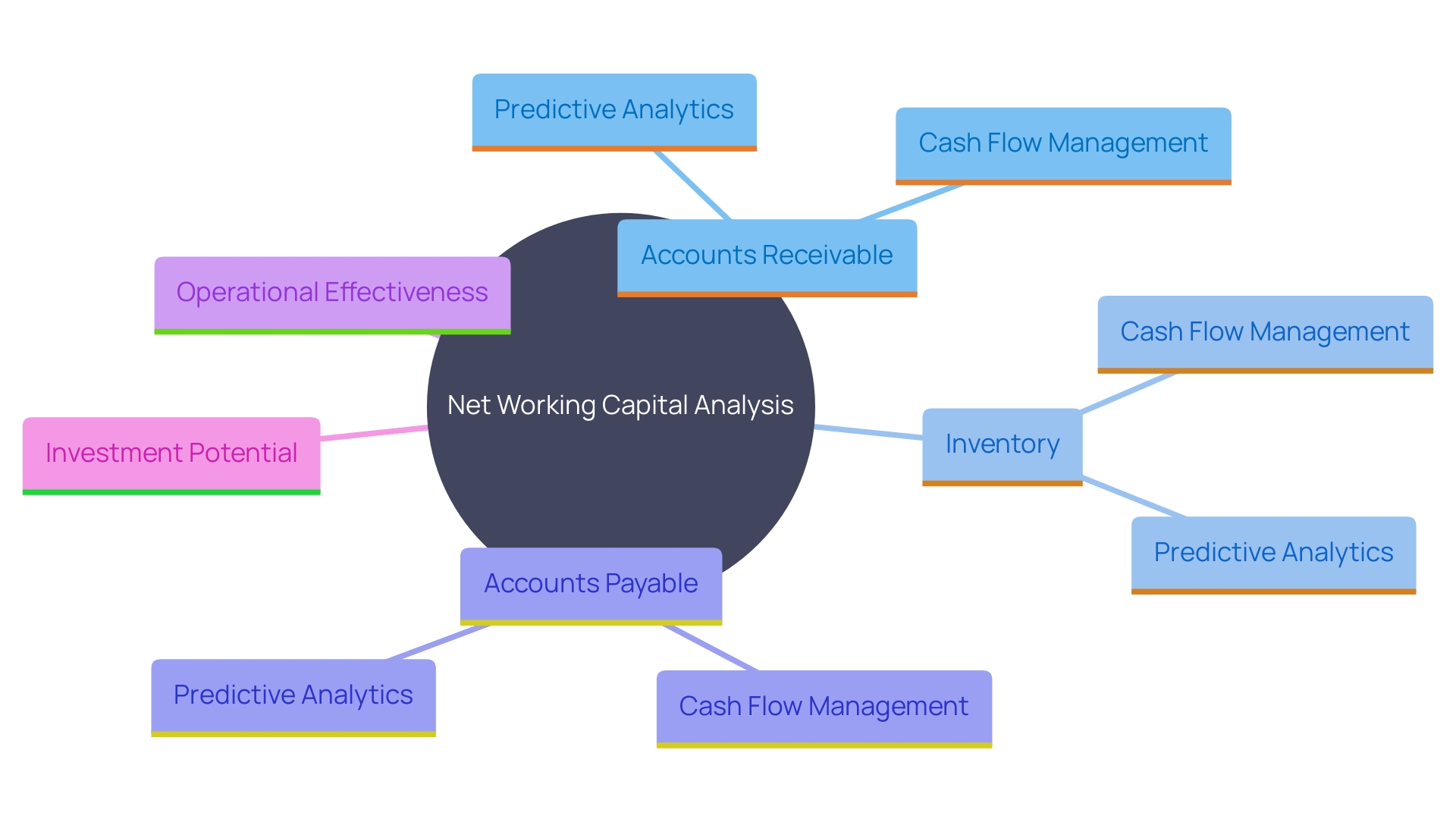
Adjustments to Net Working Capital: The Art and Science
Adjusting net working capital (NWC) involves a careful blend of quantitative analysis and qualitative judgment. This process typically includes considerations for seasonal variations, outstanding receivables, and inventory levels that might not accurately reflect the entity’s actual liquidity. For instance, the implementation of a Duty Drawback program can significantly affect NWC by allowing exporters to recover duties, taxes, and fees on imported goods that are subsequently exported in the same or similar condition. This can help firms minimize tariff costs, thereby improving their cash flow and overall financial health.
To accurately determine NWC, it’s essential to understand the organization’s operational context and industry standards. This includes recognizing the impact of global supply chain complexities and the dependency on interconnected activities. Effective cash flow analysis is crucial, as it helps estimate expected inflows and required disbursements, ensuring sufficient liquidity. As noted by experts, regular cash flow analysis and strategic forecasting can prevent the need for short-term borrowing and limit idle cash balances.
Ultimately, the goal is to arrive at a realistic NWC figure that accurately reflects the organization’s cash flow requirements at the time of transaction. This necessitates a thorough comprehension of both internal operations and external economic influences, ensuring economic stability and growth.
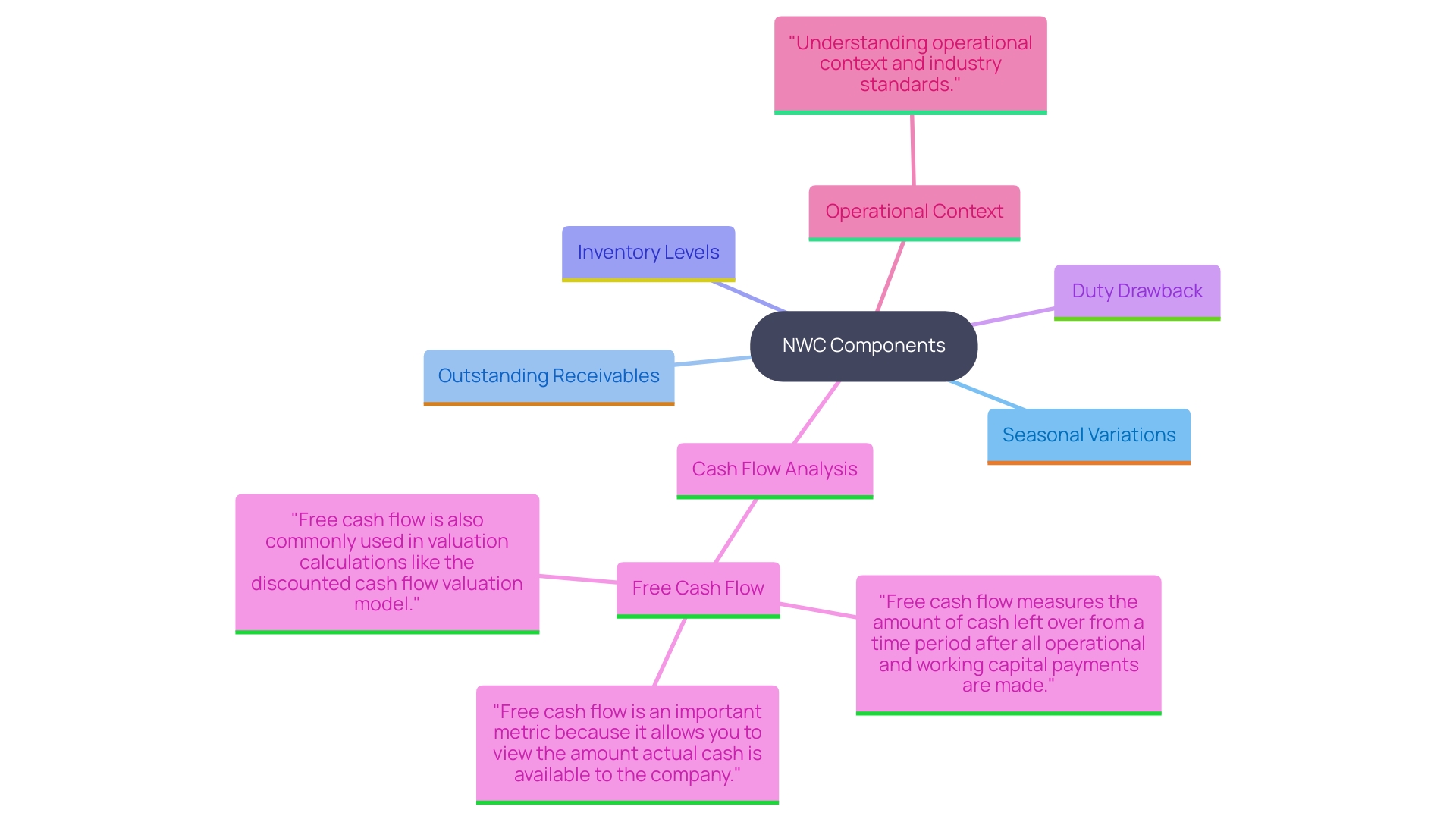
Key Considerations in Setting Net Working Capital Targets
Setting Net Working Capital (NWC) targets requires a thorough evaluation of historical performance, industry benchmarks, and the unique needs of the business post-transaction. It's essential to factor in elements such as sales cycles, payment terms, and inventory turnover rates. For instance, organizations in cyclical industries must meticulously plan for downturns to ensure adequate cash reserves, as noted by Jack McCullough, president of the CFO Leadership Council. Aligning NWC targets with the strategic objectives of the acquiring organization not only enhances integration efforts but also improves financial forecasting. By considering potential economic scenarios, from best-case to worst-case, businesses can better withstand economic turbulence, as emphasized by Eric Kraft, Dallas/Fort Worth commercial banking executive for First Horizon Bank. This comprehensive approach ensures that the organization's NWC targets are robust and adaptable to changing market conditions.
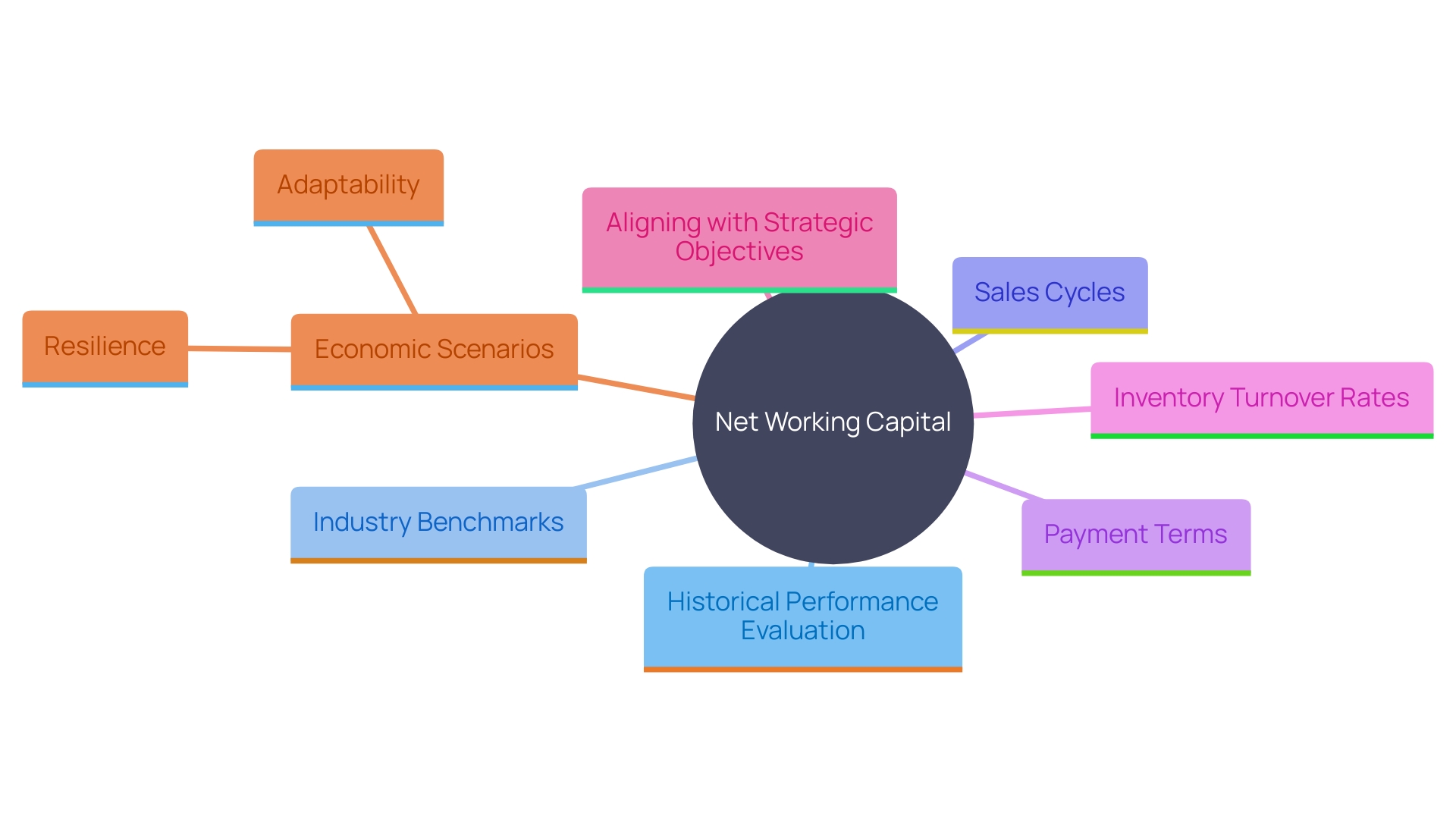
The Process of Net Working Capital Adjustments Post-Closing
Post-closing net working capital (NWC) modifications necessitate reconciling the initial estimates made during the M&A process with the actual figures observed after the transaction. This process often involves a meticulous review of the company's economic statements and working capital accounts. Open dialogue between the buyer and seller is essential to guarantee modifications are grounded in metrics and methodologies that are agreed upon by both parties. As borrowing costs have increased, acquisition due diligence has become more thorough, raising the cost of transactions for both parties. Furthermore, the complexity of regulatory environments and interest rate fluctuations necessitates careful planning and assessment to maintain transaction value and meet financial obligations. 'As stated by Alan Zoccolillo, a Baker McKenzie M&A partner, “An objective evaluation of regulatory matters at the beginning of the transaction is essential to guide the business team regarding the regulatory procedures and probable schedule.” This thorough strategy aids in managing potential risks and guarantees a seamless post-closing transition period.'.
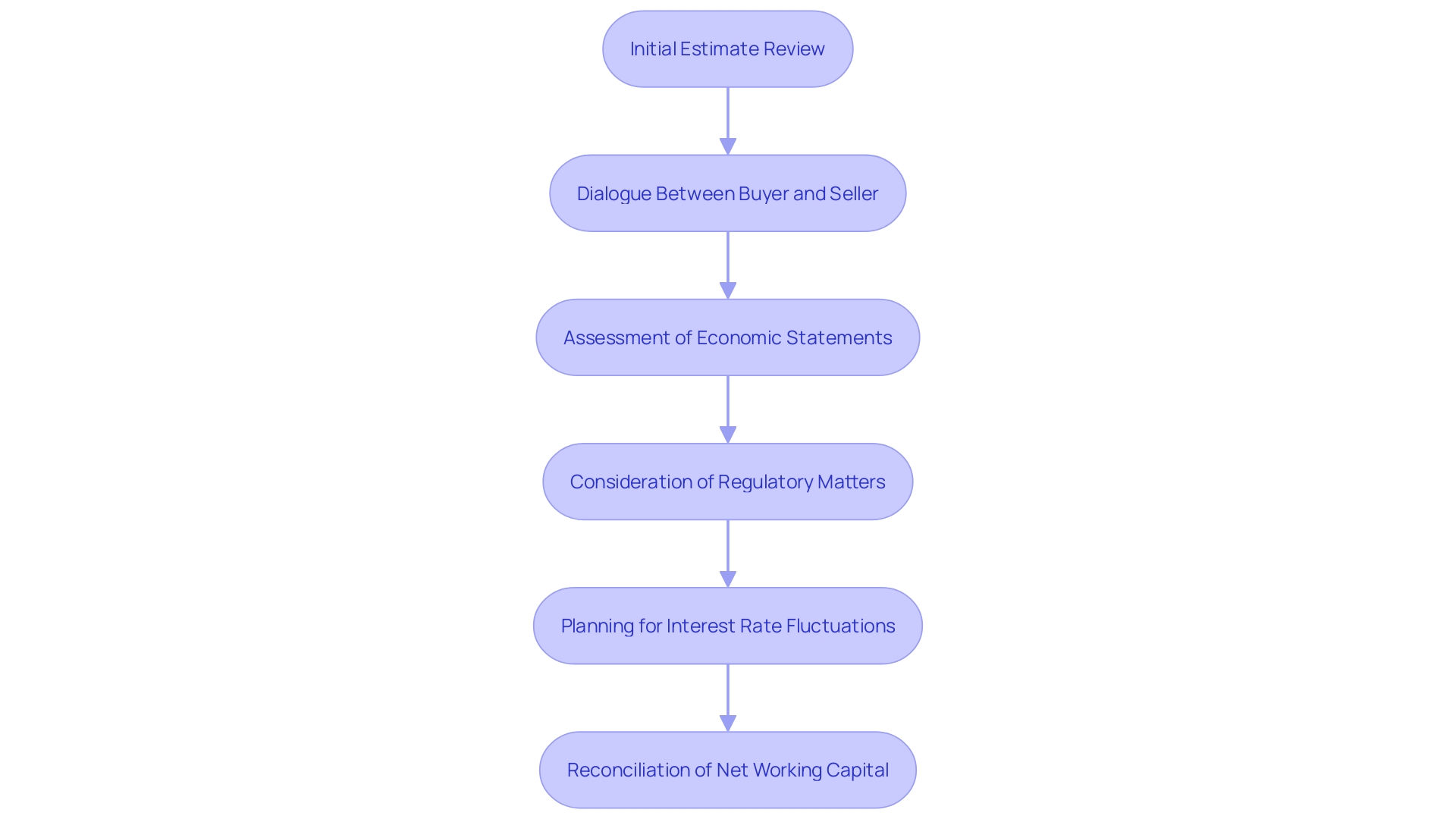
Legal and Accounting Aspects of Net Working Capital Adjustments
Legal and accounting frameworks are essential in effectively implementing Net Working Capital (NWC) modifications. Contracts must clearly detail the calculation techniques, schedules for modifications, and conflict resolution procedures to ensure transparency and avoid misinterpretations. Adherence to accounting standards and regulations is critical to validate and defend adjustments, thus safeguarding both parties from potential conflicts. For instance, the Office of the Comptroller of the Currency (OCC) recently proposed rules to revise the merger approval process, emphasizing the significance of compliance in monetary transactions. Ensuring compliance not only aligns with regulatory expectations but also strengthens the integrity of monetary statements, as demonstrated by RBC's corrective actions in response to regulatory findings. These frameworks are not only a regulatory requirement but also a strategic tool for maintaining economic stability and transparency.
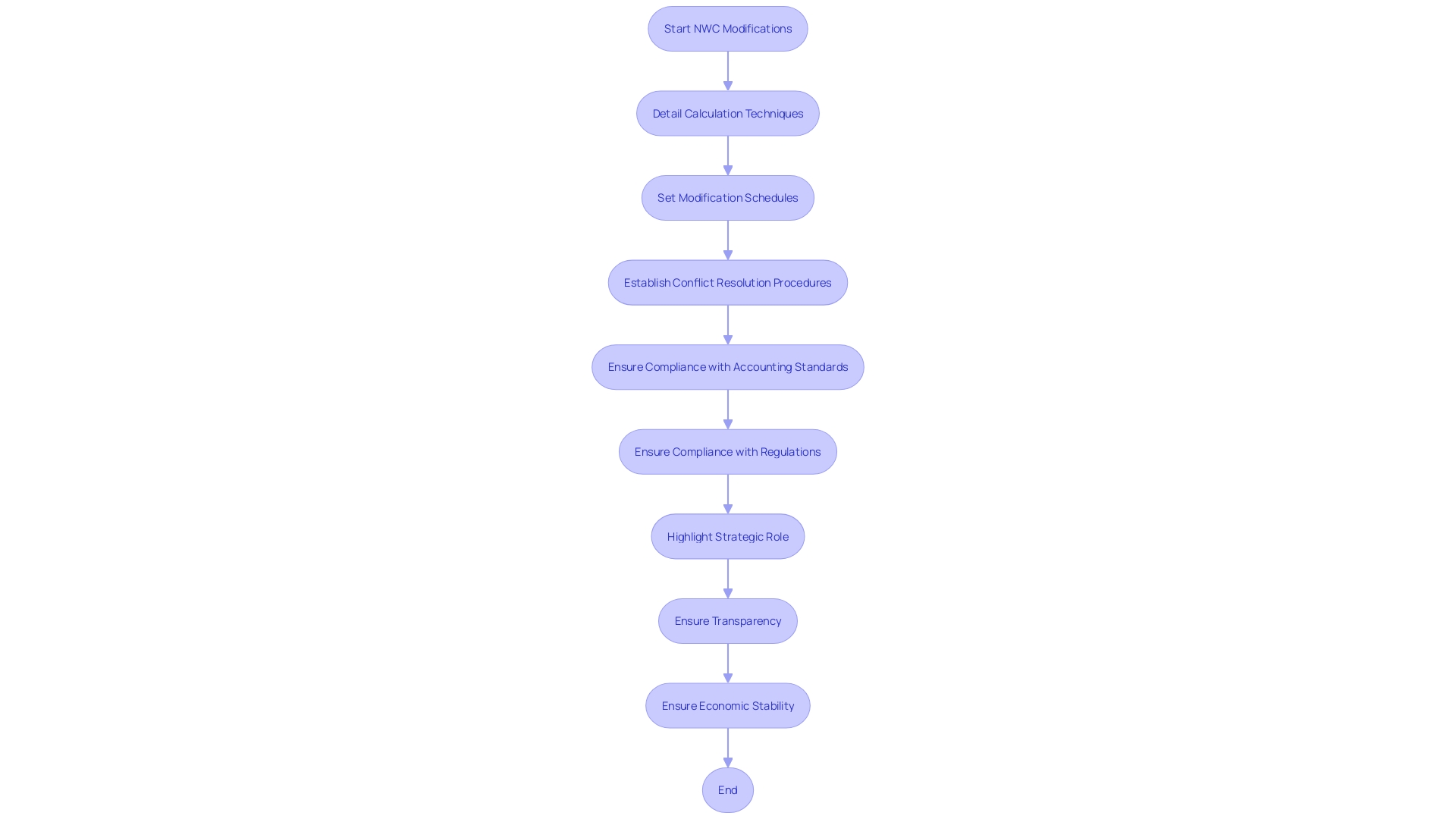
Tax Implications of Net Working Capital Adjustments
Changes in net working capital can significantly influence tax results, depending on their classification in a transaction. Both purchasers and vendors must comprehend the tax implications of these changes to prevent unforeseen obligations and ensure adherence to monetary regulations. Effective tax planning around net working capital can maximize tax efficiency and enhance overall transaction value.
Given the global nature of business operations, tax authorities generally prefer local comparables, accounting for regional peculiarities. For instance, during the COVID-19 pandemic, various jurisdictions provided tax relief, which influenced accounting statements differently across countries. This highlights the importance of structuring transfer pricing functions accurately to prepare organizations for potential audits.
In-house tax professionals should have a comprehensive understanding of the business to effectively manage associated tax and transfer pricing risks. This involves ensuring that the tax team is integrated with business operations, which aids in developing a well-grounded transfer pricing strategy.
Ultimately, careful monetary planning and staying updated about current tax regulations and potential changes is essential in managing the intricacies of net working capital modifications and their tax consequences.
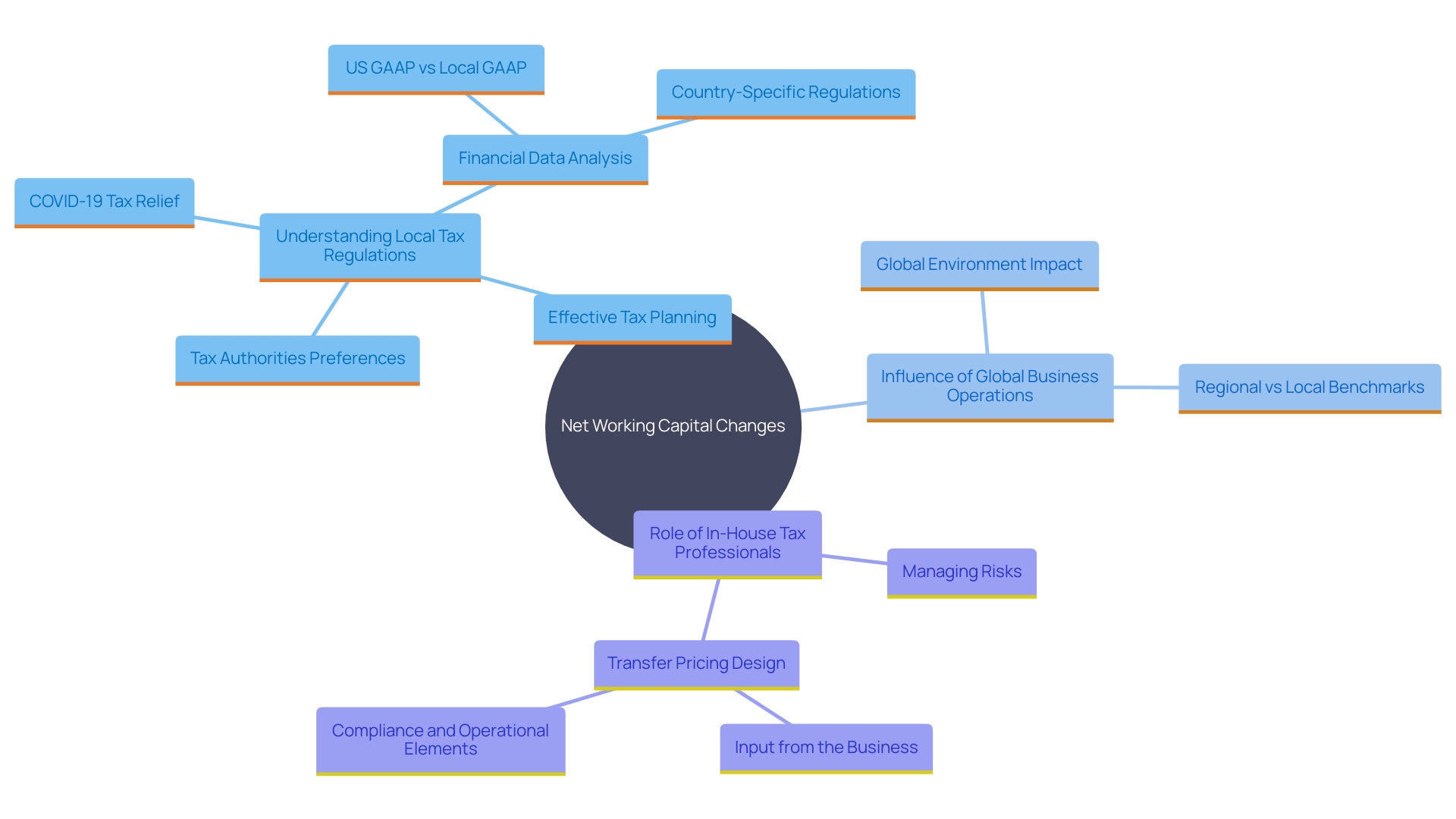
Best Practices for Smooth Net Working Capital Adjustments
Applying optimal methods for Net Working Capital (NWC) modifications can greatly enhance operations and reduce possible disagreements during transactions. To achieve this, it is crucial to establish clear communication channels between all parties involved. This ensures everyone is on the same page and reduces misunderstandings. Carrying out extensive due diligence is another essential step, enabling a complete understanding of the economic environment and recognizing any possible issues at an early stage.
Utilizing technology for precise data monitoring can further improve the effectiveness of NWC modifications. Advanced data analytics platforms and software can provide real-time insights and help maintain precise records, which is essential for informed decision-making. Regularly revisiting and updating NWC calculations is also vital. This practice keeps both parties aligned throughout the transaction lifecycle, ensuring that any changes in financial conditions are promptly addressed.
A case in point is Nets, a provider of digital payment solutions. They faced challenges in presenting technical data in an easily understandable format. By transforming complex data into engaging and accessible forms, they improved user engagement and comprehension. This approach underscores the importance of clear data presentation and regular updates in maintaining alignment and minimizing disputes.
Incorporating these best practices not only enhances the accuracy and reliability of NWC adjustments but also fosters a collaborative and transparent environment, ultimately leading to smoother transaction processes.
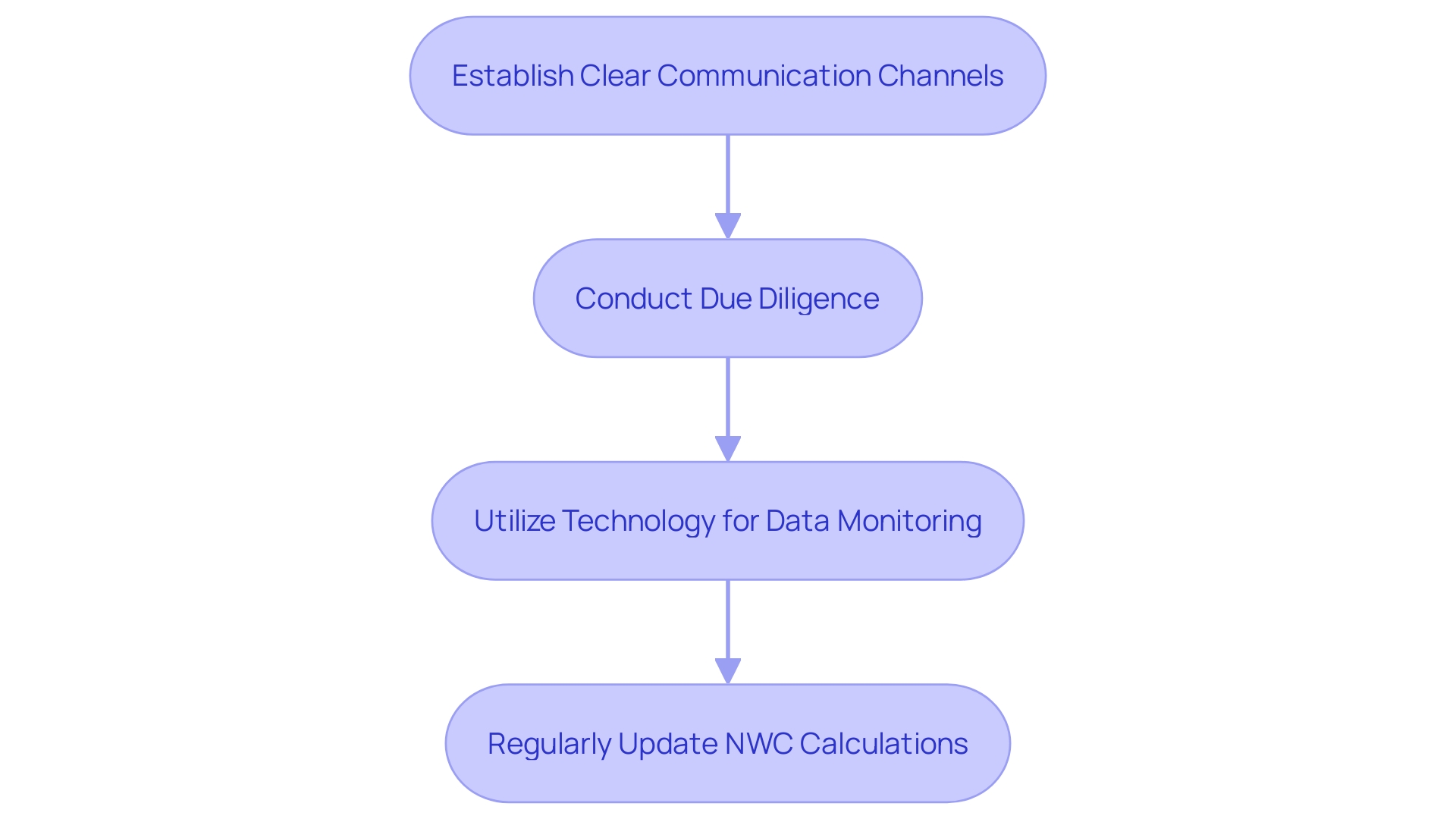
Conclusion
Understanding and effectively managing net working capital (NWC) is essential for enhancing a company's financial health during mergers and acquisitions. By defining NWC and recognizing its importance, businesses can better assess operational efficiency and liquidity. A thorough analysis during financial due diligence enables decision-makers to identify trends and anomalies that play a critical role in investment decisions.
The process of adjusting NWC is both an art and a science, requiring a careful balance of quantitative analysis and qualitative judgment. Setting realistic NWC targets that align with historical performance and industry benchmarks is crucial for post-transaction success. Furthermore, post-closing adjustments necessitate transparent communication and meticulous review to reconcile initial estimates with actual figures.
Legal and accounting frameworks are vital in ensuring that NWC adjustments are executed effectively, safeguarding both parties from potential conflicts. Additionally, understanding the tax implications of these adjustments can enhance overall transaction value and prevent unexpected liabilities. Implementing best practices, such as clear communication and leveraging technology for data tracking, can streamline NWC adjustments, fostering a collaborative environment.
In conclusion, a comprehensive approach to managing net working capital not only enhances the attractiveness of a business during M&A but also ensures financial stability and operational efficiency. By prioritizing NWC analysis and adjustments, organizations can navigate the complexities of transactions with confidence and success.




